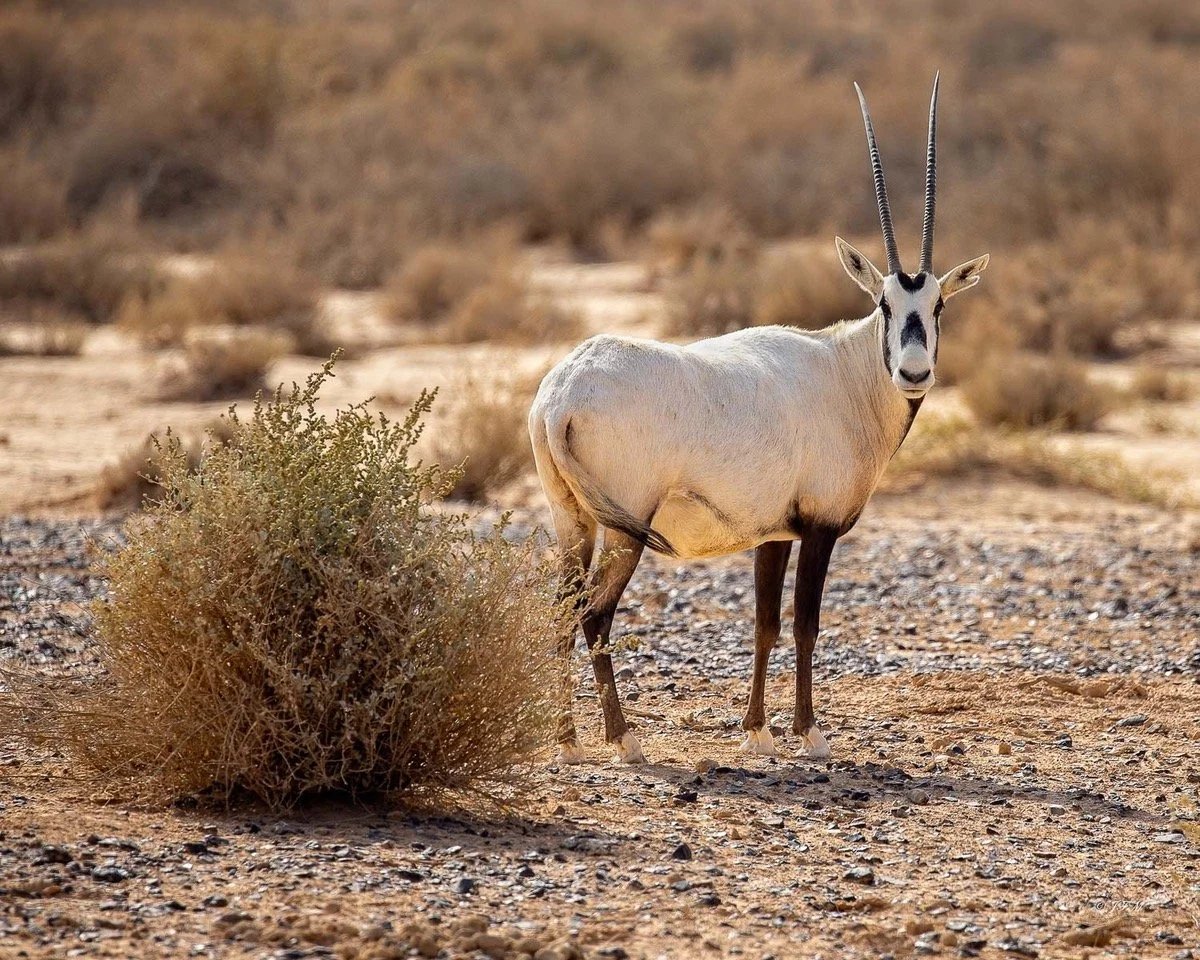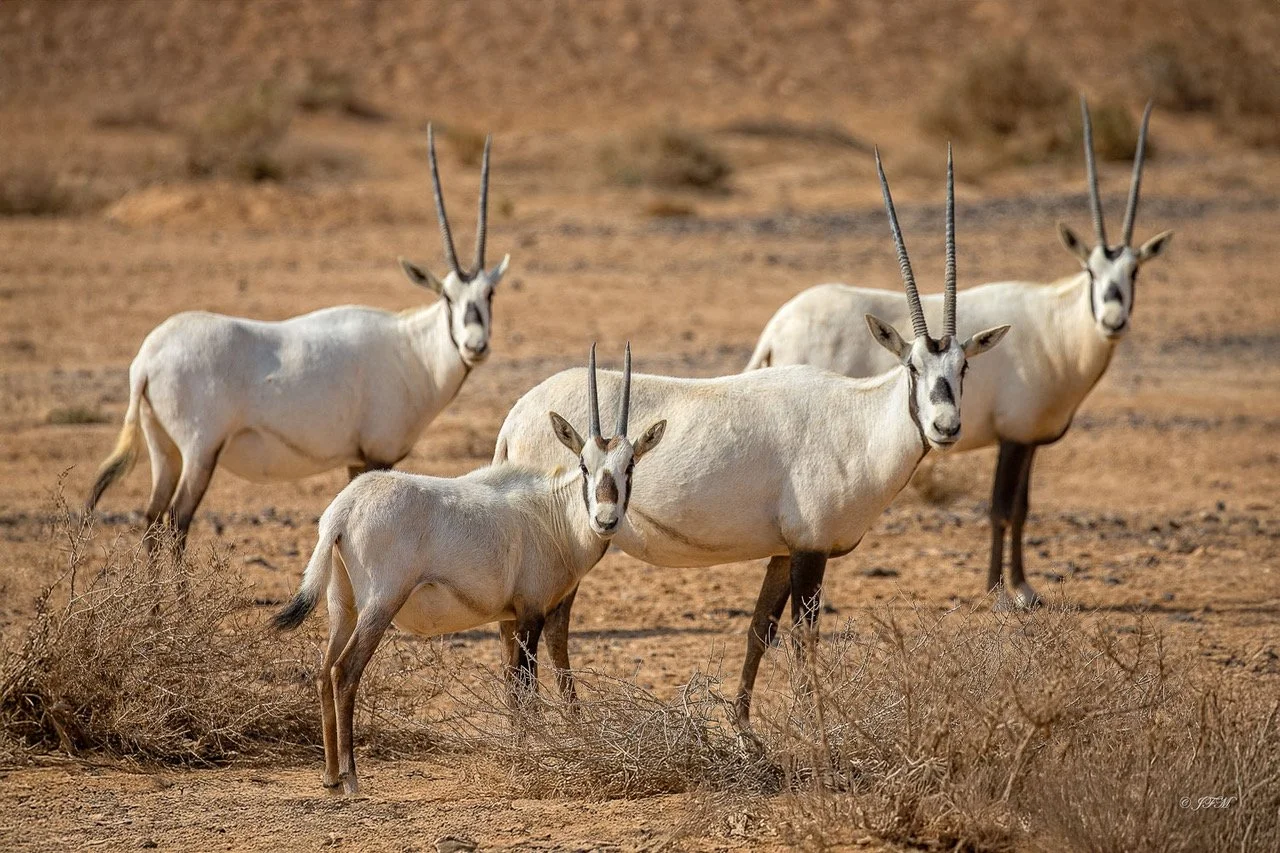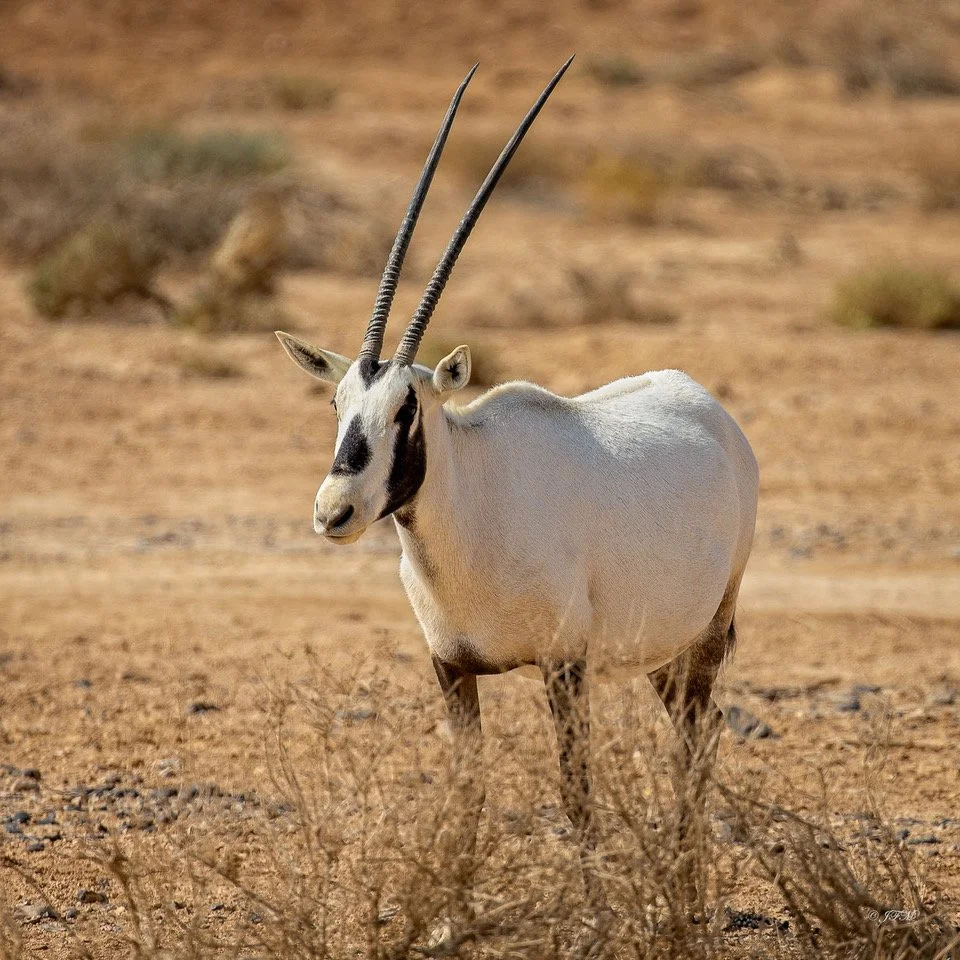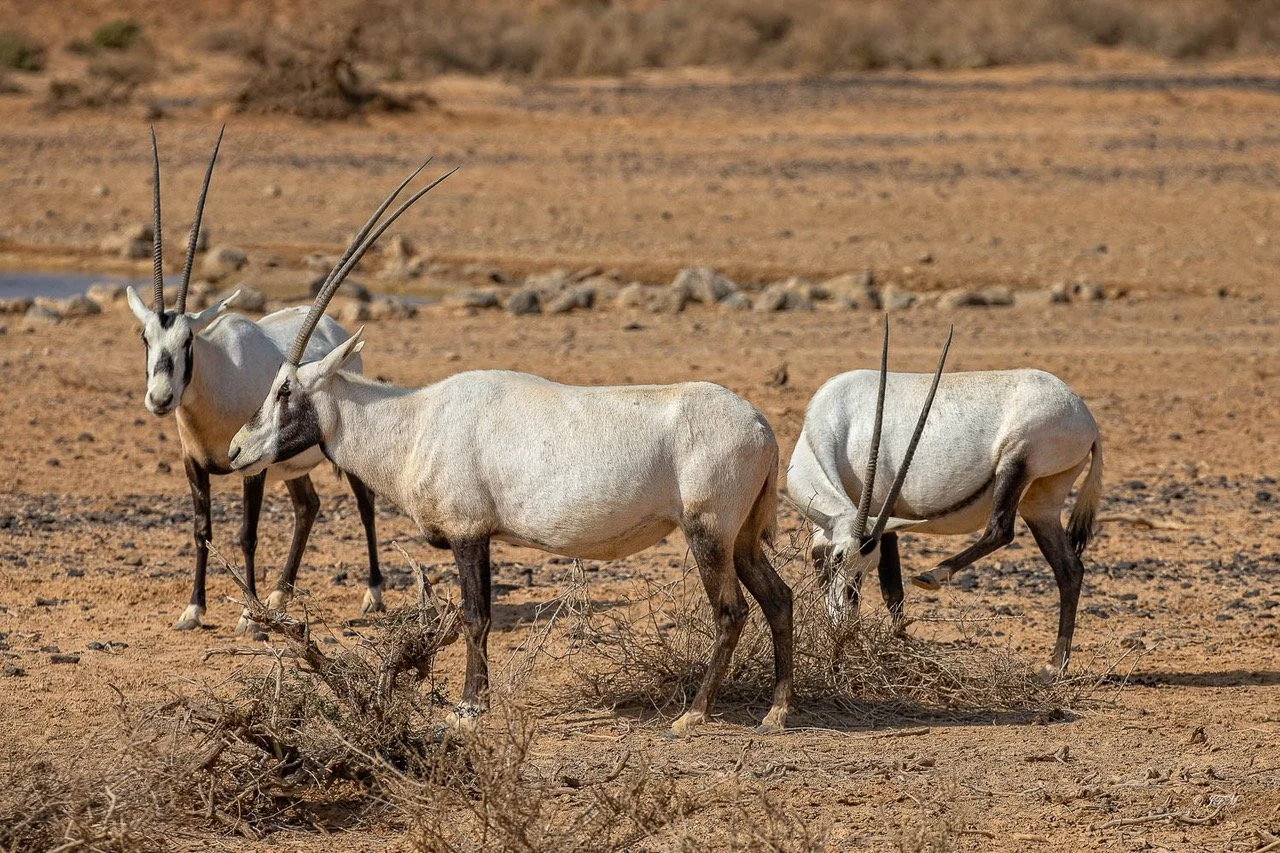
Petra Bedouin Camel Herder - 1
He is a dromedary /camel-herding Bedouin selling camel rides at Petra. Officially, the Bedouins were “removed” from Petra in 1985 when the park became a UNESCO World Heritage Site. But unofficially, they are still here. 35-50 families remain in the 2,000+-year-old caves they have always called home. Bedouin - Bedu, or "desert dwellers" are nomadic inhabitants of the Persian Gulf who claim descent from two male lineages: Adnani and Qahtani. They retain a life style similar to the early biblical characters of Abraham, Isaac & Jacob. They still hold on to the ancient Arab values of generosity, hospitality and good virtues.

Petra Bedouin Camel Herder - 2
He is a dromedary /camel-herding Bedouin selling camel rides at Petra. Officially, the Bedouins were “removed” from Petra in 1985 when the park became a UNESCO World Heritage Site. But unofficially, they are still here. 35-50 families remain in the 2,000+-year-old caves they have always called home. Bedouin - Bedu, or "desert dwellers" are nomadic inhabitants of the Persian Gulf who claim descent from two male lineages: Adnani and Qahtani. They retain a life style similar to the early biblical characters of Abraham, Isaac & Jacob. They still hold on to the ancient Arab values of generosity, hospitality and good virtues.

Petra Bedouin Camel Herder - 3
He is a dromedary /camel-herding Bedouin selling camel rides at Petra. Officially, the Bedouins were “removed” from Petra in 1985 when the park became a UNESCO World Heritage Site. But unofficially, they are still here. 35-50 families remain in the 2,000+-year-old caves they have always called home. Bedouin - Bedu, or "desert dwellers" are nomadic inhabitants of the Persian Gulf who claim descent from two male lineages: Adnani and Qahtani. They retain a life style similar to the early biblical characters of Abraham, Isaac & Jacob. They still hold on to the ancient Arab values of generosity, hospitality and good virtues.

Jordan Unmarried Girl
Bedouin - Bedu, or "desert dwellers" are nomadic inhabitants of the Persian Gulf who claim descent from two male lineages: Adnani and Qahtani. They retain a life style similar to the early biblical characters of Abraham, Isaac & Jacob. They still hold on to the ancient Arab values of generosity, hospitality and good virtues. They are Muslims and Islam permits a man to take up to four wives, though the practice varies greatly among different Muslim communities, often depending on education and income. Arab families push to have girls married between 18-19 years old rather than seek higher education. If they don’t marry, they remain in their family’s home under the auspices of the father or men in the family. This is a male dominated culture where women have limited rights /freedom to travel/independence /occupation choices compared to western cultures. Their role that often depends on education and income of the family unit is to be a wife, home maker and bear children. In Arabic, the Word for Single Woman Means ‘Withered Branch'

Bedouin Eyes
Bedouin - Bedu, or "desert dwellers" are nomadic inhabitants of the Persian Gulf who claim descent from two male lineages: Adnani and Qahtani. They retain a life style similar to the early biblical characters of Abraham, Isaac & Jacob. They still hold on to the ancient Arab values of generosity, hospitality and good virtues. They are Muslims and Islam permits a man to take up to four wives, though the practice varies greatly among different Muslim communities, often depending on education and income. While most Bedouin tribes used to be fully nomadic, only about 2 % are today. Amenities like hot water and electricity pushed more Bedouins to adopt a modern lifestyle over the last 100 years.

Arabian Oryx Series #1
Arabian Oryx - icon of resilience and survival - located at the Shaumari Wildlife Reserve Hashemite Kingdom of Jordan. The Arabian Oryx or White Oryx is a medium-sized antelope with a distinct shoulder bump, long, straight horns, & a tufted tail, native to desert & steppe areas of the Arabian Peninsula from Egypt to Yemen & Syria. The Arabian oryx went extinct in the wild in 1972 hunted for food & the presumed magical powers of its horn. There are now only 1,000 Oryx highly adapted to the harsh desert climate, with the ability to go for long periods without water, obtaining moisture from plants & dew instead, active at night, hooves that can dig into the sand, allowing them to traverse the soft desert terrain with ease.

Arabian Oryx Series #2
Arabian Oryx - icon of resilience and survival - located at the Shaumari Wildlife Reserve Hashemite Kingdom of Jordan. The Arabian Oryx or White Oryx is a medium-sized antelope with a distinct shoulder bump, long, straight horns, & a tufted tail, native to desert & steppe areas of the Arabian Peninsula from Egypt to Yemen & Syria. The Arabian oryx went extinct in the wild in 1972 hunted for food & the presumed magical powers of its horn. There are now only 1,000 Oryx highly adapted to the harsh desert climate, with the ability to go for long periods without water, obtaining moisture from plants & dew instead, active at night, hooves that can dig into the sand, allowing them to traverse the soft desert terrain with ease.

Arabian Oryx Series #3
Arabian Oryx - icon of resilience and survival - located at the Shaumari Wildlife Reserve Hashemite Kingdom of Jordan. The Arabian Oryx or White Oryx is a medium-sized antelope with a distinct shoulder bump, long, straight horns, & a tufted tail, native to desert & steppe areas of the Arabian Peninsula from Egypt to Yemen & Syria. The Arabian oryx went extinct in the wild in 1972 hunted for food & the presumed magical powers of its horn. There are now only 1,000 Oryx highly adapted to the harsh desert climate, with the ability to go for long periods without water, obtaining moisture from plants & dew instead, active at night, hooves that can dig into the sand, allowing them to traverse the soft desert terrain with ease.

Arabian Oryx Series #4
Arabian Oryx - icon of resilience and survival - located at the Shaumari Wildlife Reserve Hashemite Kingdom of Jordan. The Arabian Oryx or White Oryx is a medium-sized antelope with a distinct shoulder bump, long, straight horns, & a tufted tail, native to desert & steppe areas of the Arabian Peninsula from Egypt to Yemen & Syria. The Arabian oryx went extinct in the wild in 1972 hunted for food & the presumed magical powers of its horn. There are now only 1,000 Oryx highly adapted to the harsh desert climate, with the ability to go for long periods without water, obtaining moisture from plants & dew instead, active at night, hooves that can dig into the sand, allowing them to traverse the soft desert terrain with ease.

Arabian Oryx Series #5
Arabian Oryx - icon of resilience and survival - located at the Shaumari Wildlife Reserve Hashemite Kingdom of Jordan. The Arabian Oryx or White Oryx is a medium-sized antelope with a distinct shoulder bump, long, straight horns, & a tufted tail, native to desert & steppe areas of the Arabian Peninsula from Egypt to Yemen & Syria. The Arabian oryx went extinct in the wild in 1972 hunted for food & the presumed magical powers of its horn. There are now only 1,000 Oryx highly adapted to the harsh desert climate, with the ability to go for long periods without water, obtaining moisture from plants & dew instead, active at night, hooves that can dig into the sand, allowing them to traverse the soft desert terrain with ease.

Arabian Oryx Series #6
Arabian Oryx - icon of resilience and survival - located at the Shaumari Wildlife Reserve Hashemite Kingdom of Jordan. The Arabian Oryx or White Oryx is a medium-sized antelope with a distinct shoulder bump, long, straight horns, & a tufted tail, native to desert & steppe areas of the Arabian Peninsula from Egypt to Yemen & Syria. The Arabian oryx went extinct in the wild in 1972 hunted for food & the presumed magical powers of its horn. There are now only 1,000 Oryx highly adapted to the harsh desert climate, with the ability to go for long periods without water, obtaining moisture from plants & dew instead, active at night, hooves that can dig into the sand, allowing them to traverse the soft desert terrain with ease.
Jordan










